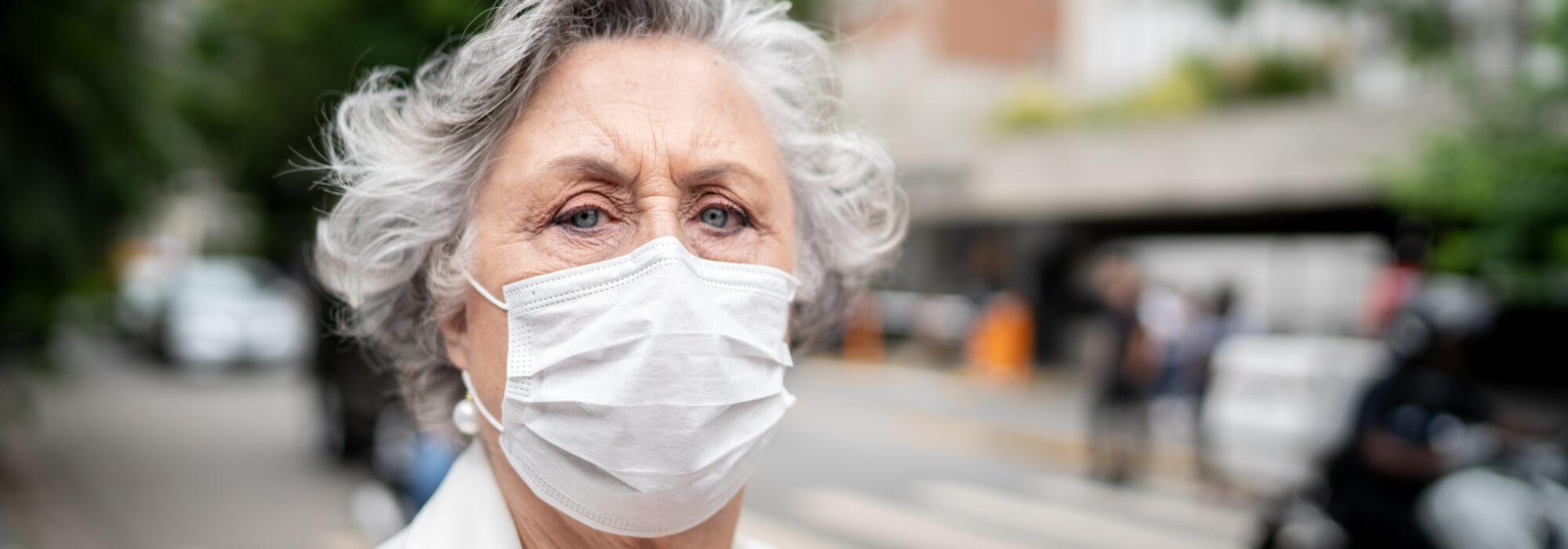
COVID-19 and the new normal
Steps you can take to ensure you fulfill your commitments now and once COVID constraints loosen that ensure both you and your patients are kept safe.
We find ourselves in an unprecedented situation, maybe under egging it at this stage. World governments are still struggling to halt and constrain this virus. However, while we need to face the reality that this is not going away anytime soon, that does not mean that we should stop serving our communities and fulfilling our commitments.
The exact opposite. It means that we need to work on a new strategy to serve people with hearing loss while keeping both them and ourselves safe.
These days will pass, and we will return to some sort of normality. That normal may well be a new normal. It means that we need to rise to the challenge and ensure our profession and our businesses are secure. Our profession, your business, has weathered challenges before, for the last few years, many of us have believed that we were living in the famous old curse of interesting times. How wrong we were. The even more interesting times will come and we need to make sure that we are prepared for them.
We faced those challenges squarely, with a clear view of how we would overcome them, how we would act so that we could continue to thrive. This challenge seems to be different but can overcome it with clear innovative thinking, adherence to our training and health guidelines and the determination that we will prevail. Our families, communities and our patients need us to make it a reality.
Today, I would like to acknowledge you: your work gives back living to many. Your work, changes lives. And it’s highly appreciated. Today, we can design and enable clear strategies to move forward, together. Let’s talk about how.
What can we do now?
There are many steps we can take to help mitigate some of the fallout. There are also parameters we need to look at to continue trading, even in a lower capacity such as:
- Renegotiate the rent of your practice if indeed you have one.
- Re-think your marketing spending and shift towards more online marketing.
- Institute an in-depth and broad infection control protocol.
- Offer car-park or curb side service for repair and troubleshooting.
- Institute a broad remote service strategy.
- Get familiar with digital marketing approaches.
- Get familiar with Skype, Zoom, Facetime, Facebook Messenger, WhatsApp and any other video call system that your patients may use, if you are not already.
- Consider how you will continue to offer full services and what the new reality might look like.
Each of these steps will at least begin to mitigate the impact of the current crisis. However, the last step is the most difficult one for us to negotiate. How are we to continue to provide services with the new reality in mind? It will need both imagination and adherence to local guidelines.
Protecting your staff and patients
So that we can protect both patients and staff from the virus, we need to take some stringent steps in the clinic. We must limit physical attendance in the clinic to the minimum. To do that, we must change what we do and how we do it. Please avoid undertaking services such as clean and care, minor repairs like receiver changes and even fine-tuning of hearing aids with the patient in the clinic.
Depending on where you live, you might be able to meet those needs with a curbside drop off service. You must limit exposure, tell patients to arrive at a particular time, meet them outside and either take their aid for repair, fine-tuning or give them their consumables. Take full infection precautions, unbag them onto a large alcohol wipe, bin the bag and then use alcohol sanitiser to clean your hands. Do not touch the hearing aids without completely wiping them down with alcohol wipes. Sort out the problem if you can, place the hearing aid in a new clean baggie and return it.
You need to initiate a full remote care strategy where possible. That means turning on the remote care features on every single hearing aid you have provided that is capable. Then discuss how it works with your patients. Don’t have the discussion fifty times, record a video explaining it and doing a step by step set up at their end and put it on YouTube.
Alternatively, talk to your manufacturers; they all have a plethora of how-to videos on most subjects online. Ask them how they can help you to integrate remote care and if they have any tips, how-tos or feedback from people who have done it. They will be willing to help.
Communicate your plans
No matter what you decide to do, you need to talk to all of your patients. Call them and ask them how they are doing. Then explain the steps you are taking to support them in your business. Explain that you want to offer remote care to them and talk them through how it will happen. If they don’t have the app on their smartphone, talk them through downloading and installing it. Tell them you are sending them an email with a lot of informative links about the system and their hearing aids.
Get to know what particular messaging apps they use to keep in contact with their family. Start using those apps to make it easy for them. It is incumbent upon us to make communication with our patients easy, that means using a form of communication that they find comfortable.
Unfortunately, you can’t offer all of your usual services in this manner, such as impressions, fitting hearing aids, providing hearing tests, removing earwax? All of those things need in-person appointments and closer physical contact. While you should not undertake face-to-face consultations where there are constraints, what about when and if constraints loosen?
What we know
In general, the people we deal with are within the highest risk group for complications from COVID-19. We know that COVID-19 is a highly infectious respiratory virus. We know very clearly how it spreads and how to prevent the spread. Those two pieces of information can help mitigate risk. If we are to begin face to face appointments or if there is an urgent need for a face-to-face appointment, what can we do?
Pre-screening
Before you undertake any in-person appointment, the patient needs to be pre-screened by phone using the following questions.
- Have they travelled to any of the affected countries in the last two weeks?
- Have they any flu-like symptoms or have they been exposed to anyone who is showing flu-like symptoms?
- Have they got a raised temperature?
- Do they have a new continuous cough?
The answers to these questions will allow you to ensure that no one with active symptoms or who has been exposed to someone with active symptoms will make an appointment. However, we know that people with COVID-19 are infectious before they are symptomatic. So pre-screening questions are helpful, but not enough.
That means that we need to be exceptionally careful about how we offer in-person appointments. We need a strategy to do so, and we need to ensure all staff are clear on the process that you design.
Social distance will still be critical after governments initially lift restrictions, that means you need to build buffer time between patients attendance. It is imperative so that we can ensure proper social distancing. You should inform patients that you are keeping buffer periods so that you can minimise risks of exposure. To be laissez-faire will mean that you could be putting people at risk. So that’s:
- 15 minute buffer times between patients for cleaning purposes
- Patients advised of the outline strategy and why it is important to adhere to it
PPE in the clinic
At this stage of the response to this virus, it is quite challenging to source personal protective equipment such as surgical masks, eye protection and nitrile gloves. That will change as manufacturers around the world ramp up their production and as the infection rate slows down.
This equipment should be available and plentiful soon. I believe that if we are going to be in close contact with patients before a vaccine or reliable treatment is available; it is incumbent upon us as health professionals to protect them and ourselves.
Three to six feet
At present, governments are advising that people try to keep a three to six feet distance between themselves and others. In most clinic rooms I have ever seen that would mean them seating out in the hallway. More than that, some of the things we do involve close contact, in particular otoscopy. That means that distancing is an issue for us, where distancing is an issue, we need to consider the use of PPE.
The use of PPE in the clinic will reduce the risk of infection to both staff and patient. We should begin the discussion now with our representative bodies. The debate should be all-encompassing and based on hard science so that we can get this decision right.
There is another possible way, what about distancing through using two separate rooms. One room with a laptop open with webcam, hearing aid programmers and the equipment with a large video monitor on the wall to be used for the patient.
The second room with the computer, video camera and large monitor for the professional. The professional can communicate with the patient through the video link and programme and fine-tune the aids. The video link also allows the patient to see the professional if they are demonstrating putting the hearing aids in, or how to change batteries. It may not be an ideal solution for all purposes, but it is a start.
Disinfection protocols
The room and clinic surroundings need to be disinfected, including the chair, the table, any door handles, any equipment that was in contact with their body, any equipment or furnishings they could have possibly touched. For the disinfecting routine to be effective, you need to design and follow an in-depth checklist in your clinics every time so that something does not slip by you (check your local regulations for details).
With this type of regime in place, perhaps we can continue to offer more of the services we provide. It won’t be normal, it won’t even be close, but it might be the best way for us to continue to do what we do.
We need to find a way to do what we do in the safest manner possible. I hope that I have at least given you some ideas about how you can do it. As I said, these dark days will come to an end, and while many are worried about the future, together we can find a way to move forward, a way to prevail.
If you would like to read a previous blog article by Geoff Cooling, we invite you to read his insights on how to involve family in the hearing process.
